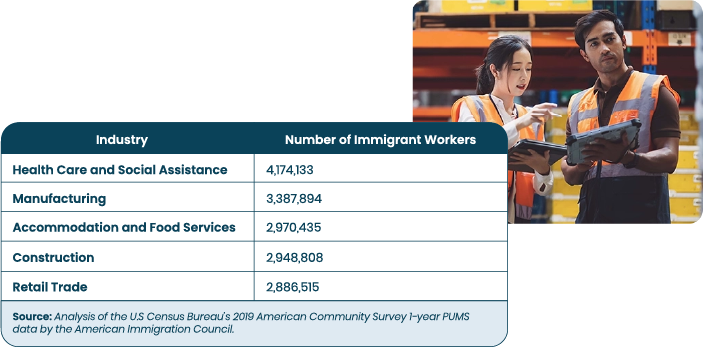
If you’ve been to a hospital lately, you can relate to this recent Bloomberg headline, “The healthcare staffing crisis is bad and getting worse.”
Of the 155 million employed adults in the US, an astounding one out of every 10 works in healthcare, according to Census Bureau data.
Due to increased demand, an aging population, and the number of workers exiting the industry, 1.8 million healthcare jobs will be created each year for at least the next decade, accounting for 45% of all newly created jobs!

It’s clear, as California-based Kaiser Permanente, which employs more than 215,000 total healthcare workers, says on their website that “Hiring alone won’t solve the healthcare worker shortage.”
What makes the situation more dire is the shortage is not just doctors, nurses and other technically skilled workers. For every 2 skilled professionals, there is one “health care support” employee providing a range of essential frontline services ranging from delivering hospital meals and cleaning facilities to home aides, personal aides and nursing assistants.
Workers whose native language is something other than English, are increasingly tapped to fill this shortage, especially in care support roles. In fact, immigrants form a larger percentage in healthcare than in any other industry including manufacturing, food services, construction and retail.
By the nature of their work, the ability of these “frontline” employees to effectively converse, engage, and answer questions, especially in English, meaningfully contributes to the overall “experience” and comfort of unilingual patients, the majority of which speak English.
These facts should sound the alarm bell for every L&D professional in healthcare. “Frontskilling,” i.e. providing your frontline workers with skilling opportunities, especially language skills, has become a country-wide imperative. Language programs designed specifically for frontline and deskless workers can improve spoken English proficiency by one full CEFR (Common European Framework) level in as little as 6 months.
To do this in an impactful way, healthcare organizations should look at industry leaders like Amazon with its innovative Career Choice program. Amazon recognized that investing in the frontline skills provides significant long-term advantages for internally growing talent not to mention a very favorable ROI.
Given the changing demographics of the modern workforce, a well-structured, highly-mentored, ESL (English as a Second Language) program forms an absolutely critical foundation to enable all frontline workers to take advantage of educational and career growth opportunities that keep them loyal and engaged.
Josh Bersin recently observed that the US is entering an era of a long-term secular labor shortage so this is not a short term blip. Organizations that invest in ‘frontskilling‘ today will build more durable workforces to meet the challenges of tomorrow.

John Ambrose, President, joined goFLUENT in 2018. He is a seasoned industry executive and thought-leader whose previous roles include Head of SumTotal, Chief Strategy Officer of Skillsoft, Co-founder of Books24x7 and Chief Executive Officer of DeltaPoint.



